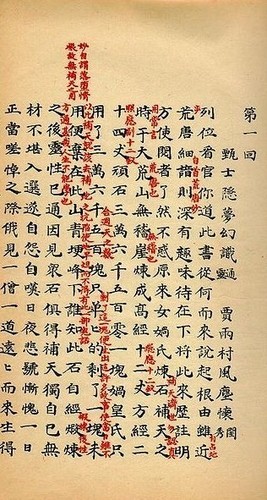 Written by Pauline Chen — a resident of Oberlin, Ohio, with a doctorate in Chinese literature from Princeton (N.J.) University — The Red Chamber
Written by Pauline Chen — a resident of Oberlin, Ohio, with a doctorate in Chinese literature from Princeton (N.J.) University — The Red Chamber is a hefty 400 pages of an intriguing love story somewhere along the lines of Romeo and Juliet and Gone with the Wind with the complexity of Anna Karenina. In a season where the likes of Fifty Shades of Grey (which I will not waste my time on) and The Hunger Games (which I admittedly did fall in love with after a week) part of the beauty of Chen’s book is the thoughtful and methodical pace she leads us on through this story.
According to NPR writer Hansi Lo Wang:
Chen’s adaptation of the 18th-century novel shortens both the title (to The Red Chamber) and the notoriously long plot in hopes of introducing more English readers to a Chinese classic. The original tale, by Cao Xueqin, follows the decline of a well-to-do family at a time in China when an emperor still lived in the Imperial Palace, marriages were arranged and romances between cousins were socially acceptable. The novel features 400-plus characters, and the full English translation is more than 2,500 pages long. The book is so multilayered that it even has its own academic field. But Chen’s adaptation boils down the original story to focus, in part, on that famous triangle that just about everyone in China knows.
A writer at Dispatch provides us with a brief summary:
Daiyu, raised in southern China, comes to live with her grandparents’ family after her mother dies of tuberculosis. Observant and curious, she sees the clan with an outsider’s eye and finds herself drawn to cousin Baoyu, a sensitive, erratic young man who is her grandmother’s favorite. She is befriended by her grandmother’s servant, Snowgoose. Xifeng is unhappily married to another one of Daiyu’s cousins. Although good with numbers and at managing household affairs, she is in trouble because she cannot produce an heir. She finds herself in competition with her more fertile lady’s maid, Ping’er.
For me, it was the recipe for a page-turner. The two women, in particular, were compelling characters as individuals, as well as in the intricate dynamics of the relationship they had with one another, and with the others in the household – it made for a thoughtful and provocative narrative. Despite the thousands of years in cultural differences between myself and the context of the book there was so much that was relate-able and accessible. Truly, Chen captured some important universals about love, propriety, expectations, and identity.
While it was difficult to keep up with in the beginning in terms of the names of the characters that became easy enough as Chen fleshed out the characters. The family trees in the beginning of the book are a little intimidating but fascinating, and in the end, helpful as a reference. What is truly impressive in the end is Chen’s ability to allow an incredible love story to emerge amidst the overwhelming details of the daily household and domestic life in that culture. In this one book there is history, sociology, romance, and so much more. I quickly became enthralled and entrenched in this world, and found myself a bit sad when it ended. To me, that is the mark of a wonderful book.
No doubt Chen has provided us with a work that will not only be found on the list of historical classics but also become a part of the lexicon of the greatest love stories in the world.
[Photo credit from NPR]







